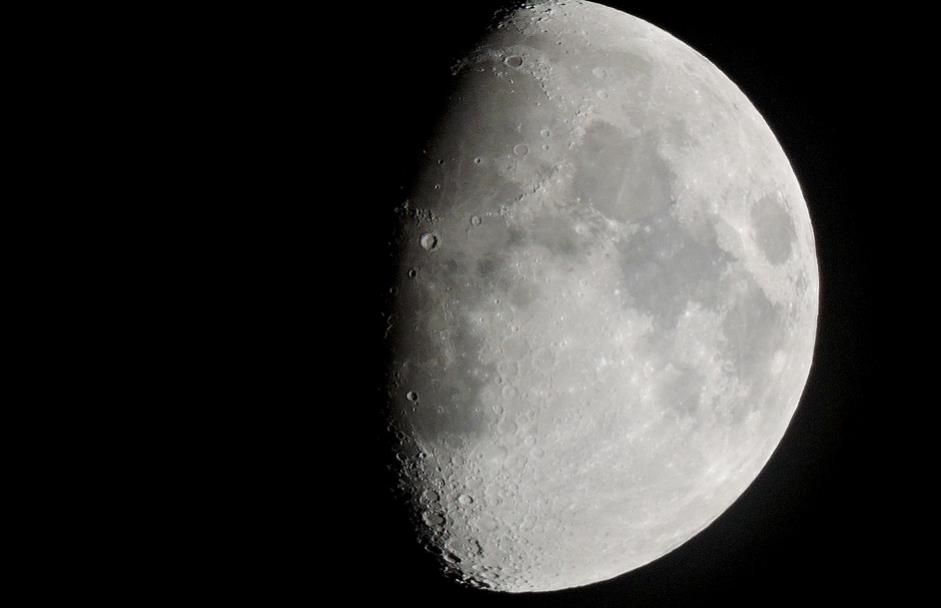
China launches mission to the dark side of the moon
The Chang’e-4 mission, consisting of a lander and a rover, will reach where no human-built craft has yet gone – To the invisible side of the moon. Headow mission’s primary task will be to explore the lunar surface’s invisible side, whichora is dotted with many small craters. The lander will conduct the first radio astronomy experiments from this side of the Silver Globe. There are also plans for research, ktore will determine whether plants are able to grow in a low-gravity environment.
Chinese authorities have been rather enigmatic in reporting on specificomission metrics. The exact landing site has not been made public. The most likely location is the Von K craterármán with a diameter of more than 180 kilometersow – Zongcheng Ling claims, whichory studies the formation and evolution of planetary bodies at Shandong University.
The crater is part of a structure called the South Pole-Aitken Basin, one of the largest known impact structures in the entire Solar System and the oldest on the Moon. Researchers believe that this structure with a diameter of 2,500 kilometersoin and 13 kilometers deepow, a key area that theory may provide answers to some important questions about the Moon’s early history, including its internal structure and thermal evolution.
The Chang’e-4 rover will map the region surrounding the landing site. It will also measure the thickness and shape of subsurface layers with ground penetrating radar and measure mineral composition on the surface with a spectrometer. It may helpoc geologists in understanding the processow related to the early evolution of our natural satellite.
Since the other side of the moon is never zwrocon toward Earth, mission control from the China National Space Administration (CNSA) will not be able to communicate directly with the spacecraft. To make this possible in May, China launched the Queqiao communications satellite, whichory will act as a relay station for communication between the lander and Earth.
The Chinese mission will conduct roalso other unique experiments. One will test the ability of the potato and common radish to grow in low lunar gravity conditions. Along with the lander on the Moon there will be a sealed container in which theorym to grow plants.
It’s a cylinder-shaped device measuring 18 x 16 centimetersow. Oprocz plants inside the closed ecosystem will contain the eggs of the silkwormow. Silkworms hatch from eggs, ktore to produce carbon dioxide, while potatoes will emit oxygen through photosynthesis. Together they are expected to create a simple ecosystem on the lunar surface
Since the temperature on the Moon can range between -170 degrees Celsius and -170 degrees Fahrenheit. Celsius a 100 st. C., cylinder, in whichohe ecosystem will have to meet the right conditions to keep plants and insects at a moderate temperature. The artificial light needed for photosynthesis is also installed inside the device.
The goal is to determine whether potatoes can grow on the Moon and whether insects can survive in these harsh conditions. If the experiment succeeds, it will be a big step toward creating a fully functional base there. This is the first experiment of its kind. Admittedly, astronauts on the International Space Station (ISS) grow many crops, but they never probono this on the surface of the moon.
Potatoes are a very resilient plant and for this reason have already been studied by the space sector. Peruvian scientists have conducted an experiment, with ktohe results that potatoes can be successfully grown on Mars. The research has attracted the interest of an employeeoAt NASA’s im. Joseph Ames, whichoers looked for edible plants suitable for cultivation in Martian conditions. For more on this topic, read: Potatoes can be grown on Mars. Researchers confirm.
– If we are thinking about a long-term human stay on the Moon or Mars, we will need a greenhouse infrastructure to support us and create a kind of biosphere, acknowledged Anna-Lisa Paul, a horticulturist at the University of Florida in Gainesville.
As part of radio astronomy research using the lander, Chinese astronomers will inspect poorly understood parts of the Milky Way, such as gases between stars and magnetic fields, ktore spreads after the death of stars.
A radio spectrometer built by the Chinese Academy of Sciences, operating at frequencies from 100 kHz to 40 MHz, will collect the electromagnetic data needed to create a map of the distribution of low-frequency radiation. Making such measurementsow from Earth is extremely difficult because low-frequency radiation is mostly blocked by Earth’s atmosphere.
– Astronomers will use the data to better understand how theob energy released by dying stars heats the gases between them, which could affect star formation – said Heino Flacke of the University of Nijmegen, ktory, along with a team from the Netherlands, supportedoł worked on building a spectrometer.
CNSA’s ultimate goal is to create a lunar base to serve humans in the future. However, the agency did not specify when such an investment is planned. If all goes well, Chang’e-4 will be China’s second lunar lander. Earlier in 2013, China planted Chang’e-3 on the surface of the Silver Globe. The Chang’e-4 lander and accompanying rover were originally a backup for the Chang’e-3 mission.


